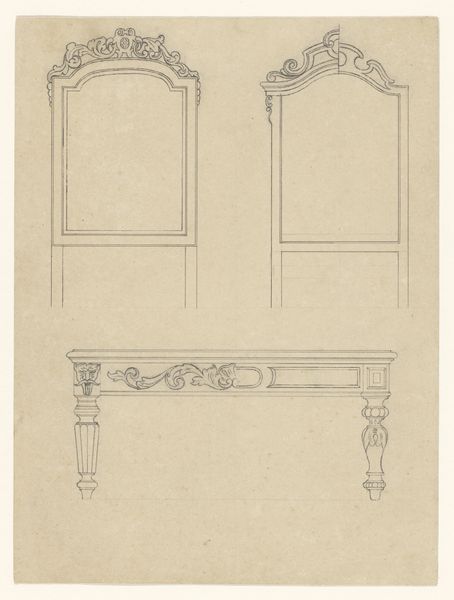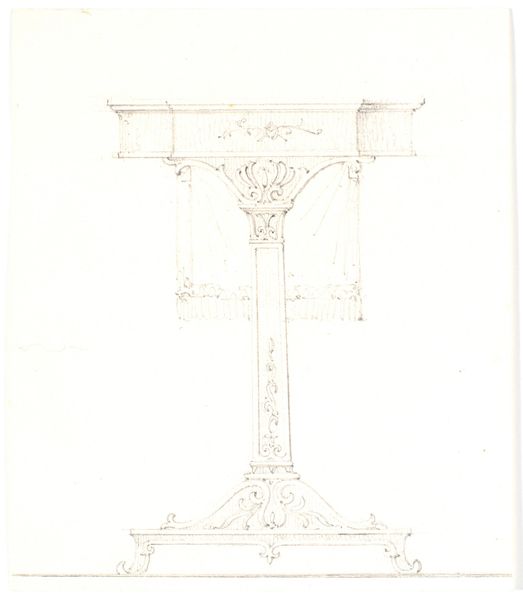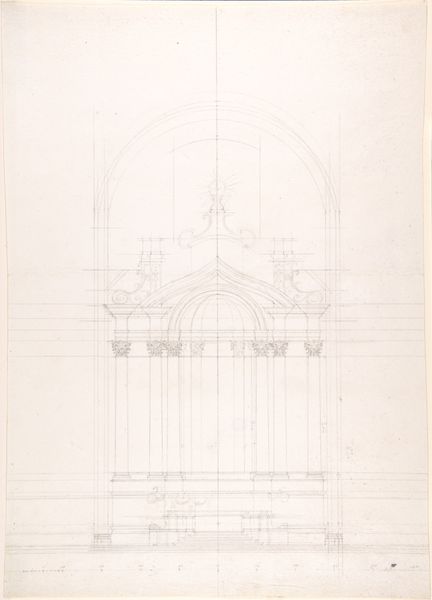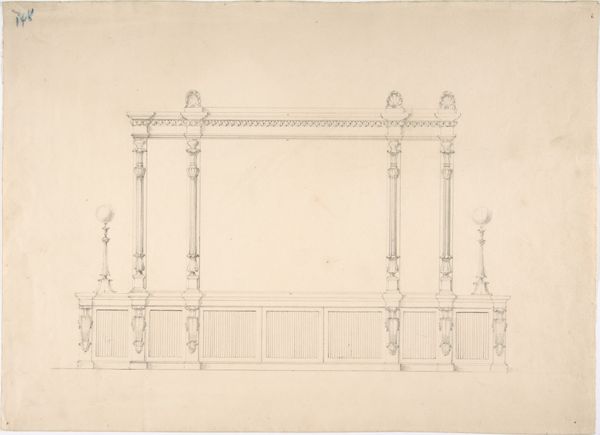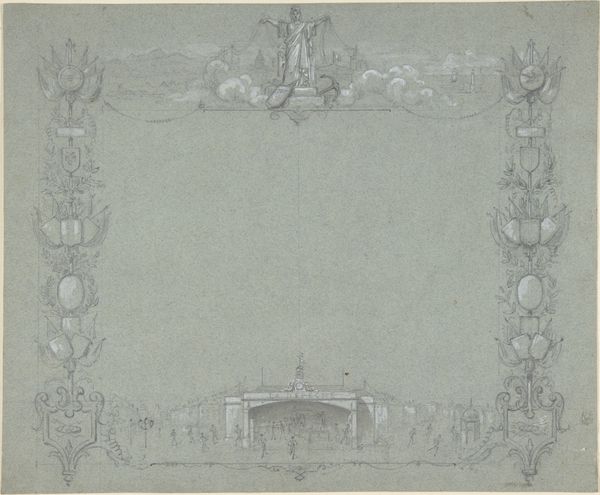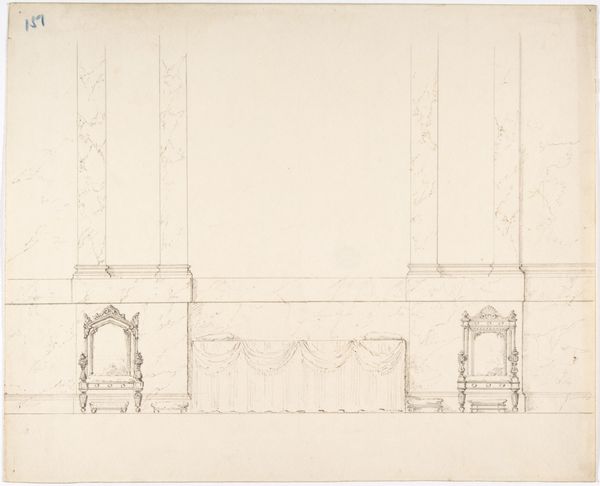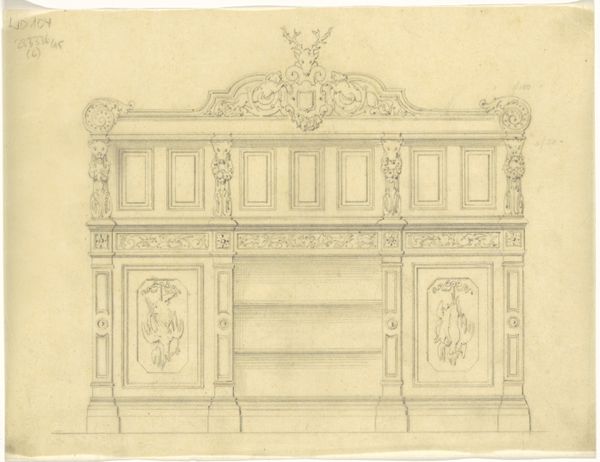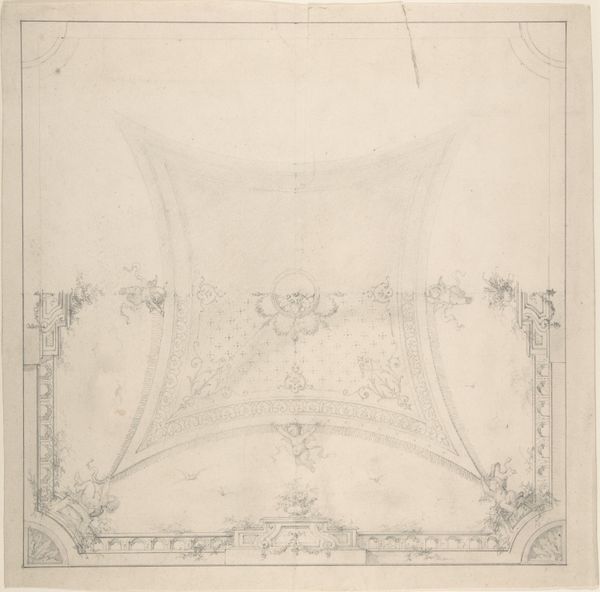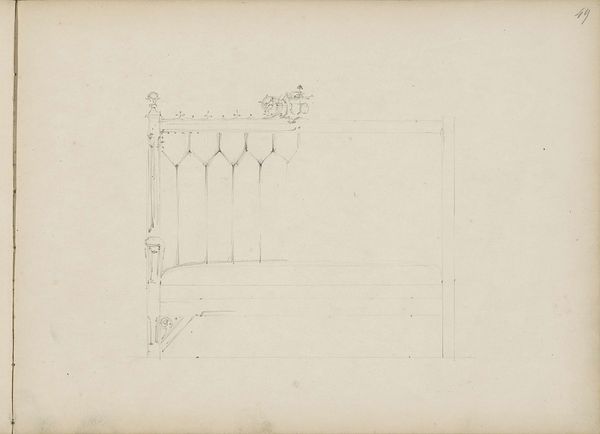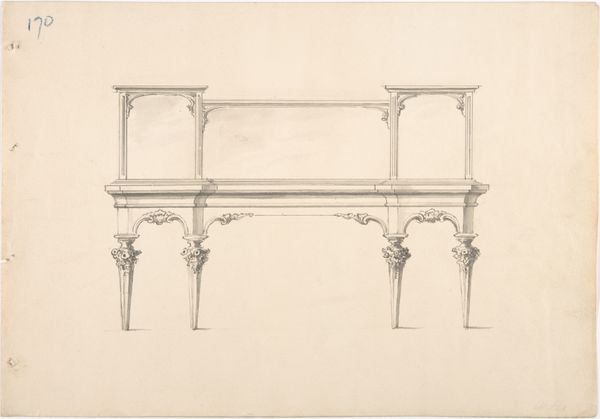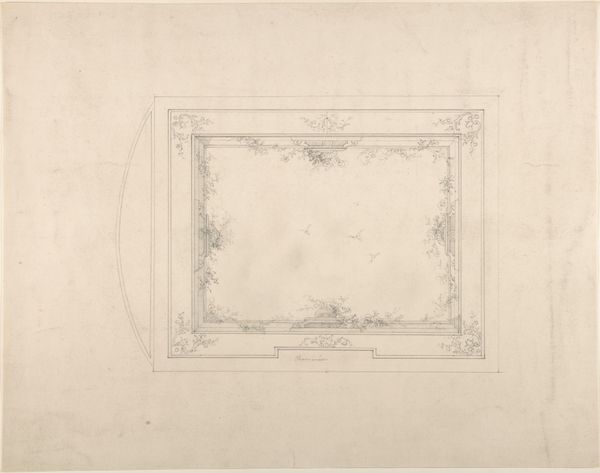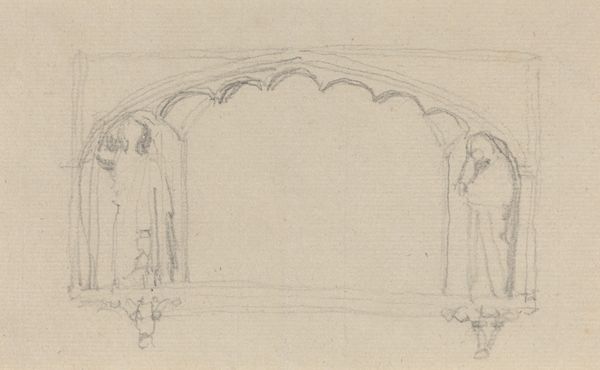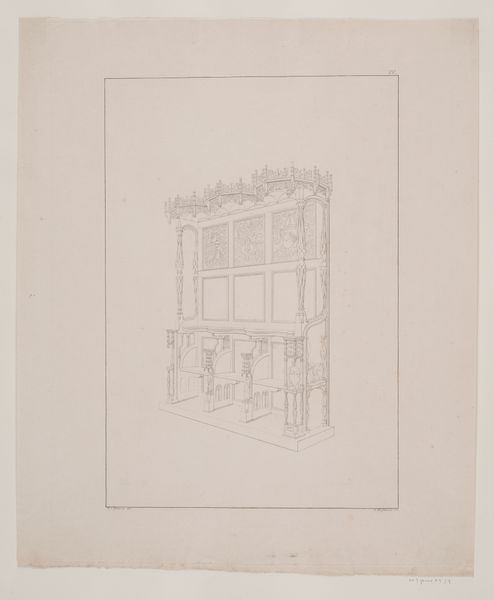
drawing, pencil, architecture
#
drawing
#
neoclacissism
#
etching
#
geometric
#
pencil
#
architectural drawing
#
architecture
Dimensions: 133 mm (height) x 134 mm (width) (bladmaal)
Curator: Here we have "Studie af et udskåret bord," or "Study of a Carved Table," an architectural drawing rendered in pencil from the 1840s by Martinus Rørbye. It's part of the collection here at the SMK. Editor: The delicacy of the lines gives me a very intimate feeling. Almost like I'm peering into Rørbye’s notebook. There's something very tender about seeing this skeleton of a table laid bare, exposed with every tentative marking. Curator: Absolutely. Viewing it through the lens of neo-classicism helps illuminate Rørbye's historical context. This aesthetic movement, with its revival of classical forms, signified more than just a style preference. It spoke to a desire for order and reason during periods of upheaval, reflecting political and social ideals of the time. Editor: You know, when you talk about “order” and “reason,” my eyes drift to those columns! Their ornamental flourishes are trying so hard to not succumb to complete, rational straightness. Almost as if Rørbye allowed his creativity to run riot despite being reined in by classical form. Curator: Indeed. Those ornamental flourishes are critical as they offer space for challenging conventional aesthetics, thereby encouraging reflection upon identity and cultural representation within that given setting. It makes us reconsider notions related to class or gender as constructed back then, or still relevant in contemporary times. Editor: But, see, that is why these very subtle details capture me, though— the sheer whisper of the pencil lines against what feels like vast expanses of empty space. Makes the piece feel less a display of might, and more an embrace of humility and quiet beauty. A bit like finding magic within the mundane. Curator: And that interplay, that friction between form and expression, is exactly what makes Rørbye’s approach so compelling. It invites viewers to deconstruct narratives and acknowledge subjectivity when reading artwork— especially given that some audiences find certain designs inaccessible from a lack of represented identities or sociocultural themes, amongst others. Editor: It just tickles me in an unexplainable, beautiful place. Seeing the initial imagining sketched. Gives this such an "on the verge of possibility" sort of aura. Makes me wonder what the final rendition of this looked like. What room this graced. Makes me grateful to stumble across such quiet imaginings frozen gently on this plane. Curator: Well said. Rørbye gifts audiences a profound invitation to rethink conventions while interrogating societal norms that influence the interpretation of the simplest carved table. Editor: Exactly! And isn't it gorgeous?
Comments
No comments
Be the first to comment and join the conversation on the ultimate creative platform.

